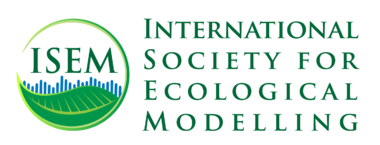Form:Annualmeeting2020: Difference between revisions
No edit summary |
No edit summary |
||
| Line 146: | Line 146: | ||
}} | }} | ||
<br> | <br> | ||
</div></div> | </div></div> | ||
<div class="row"><div class="col-sm-12"> | <div class="row"><div class="col-sm-12"> | ||
=Post-Conference Event= | =Post-Conference Event= | ||
== The GeoClaw Software for Tsunamis, Storm Surge, and Overland Flooding== | == The GeoClaw Software for Tsunamis, Storm Surge, and Overland Flooding== | ||
This one-day post-conference workshop provided by Professor '''Randall LeVeque''', University of Washington, on Friday, May 22<sup>nd</sup>, 2020 will cover GeoClaw. GeoClaw (http://www.geoclaw.org), part of the open source software package Clawpack, has been extensively used for modeling tsunamis, storm surge, and overland flooding from dam breaks or glacial outburst floods. Adaptive mesh refinement allows tracking waves across the ocean, or water advancing down a valley, and also zooming in with much higher resolution in particular regions of interest. This workshop will consist of an overview of some of the capabilities and basic usage, followed by time to explore some sample problems. Several GeoClaw developers will be present and current users of GeoClaw are also welcome to come with questions about using more advanced features or to give feedback on present and desired capabilities. | This one-day post-conference workshop provided by Professor '''Randall LeVeque''', University of Washington, on Friday, May 22<sup>nd</sup>, 2020 will cover GeoClaw. GeoClaw (http://www.geoclaw.org), part of the open source software package Clawpack, has been extensively used for modeling tsunamis, storm surge, and overland flooding from dam breaks or glacial outburst floods. Adaptive mesh refinement allows tracking waves across the ocean, or water advancing down a valley, and also zooming in with much higher resolution in particular regions of interest. This workshop will consist of an overview of some of the capabilities and basic usage, followed by time to explore some sample problems. Several GeoClaw developers will be present and current users of GeoClaw are also welcome to come with questions about using more advanced features or to give feedback on present and desired capabilities. | ||
</div></div><div class="row"><div class="col-sm-12"> | </div></div> | ||
<div class="row"><div class="col-sm-12"> | |||
=Syvitski Student Modeler Award 2020= | =Syvitski Student Modeler Award 2020= | ||
''Submissions are closed now.'' | ''Submissions are closed now.'' | ||
</div></div> | |||
<div class="row"><div class="col-sm-12"> | |||
</div></div><div class="row"><div class="col-sm-12"> | |||
=Student Scholarships= | =Student Scholarships= | ||
''Submissions are closed now.'' | ''Submissions are closed now.'' | ||
</div></div> | </div></div> | ||
<div class="row"><div class="col-sm-12"> | <div class="row"><div class="col-sm-12"> | ||
Revision as of 15:05, 21 April 2020

Introduction
Due to the current COVID-19 physical distancing restrictions, CSDMS will provide the CSDMS2020 – Linking Ecosphere and Geosphere meeting in a no-cost virtual format now open to all community members! This year, the meeting is co-convened with the International Society for Ecological Modeling, and an important aim of the meeting is to explore connections between ecosystems and earth-surface processes such as erosion, sedimentation, soil dynamics, and landscape/seascape evolution.
Topics that we hope to address at the meeting include (but are not necessarily limited to):
- Life on the surface: biosphere-hydrosphere-lithosphere interactions
- Feedbacks between solid earth, fluid earth and biosphere
- Changing paradigms and challenges in linking ecosystem and earth surface research
- Dynamics of the Critical Zone
- Crossing climate threshold
This year's meeting aims to:
- Identify new frontiers in fundamental process understanding of linkages between the biosphere and geosphere. New algorithms, cyberinfrastructure development and new model couplings appear paramount to explore important process dynamics and linkages.
- Identify critical missing components in our ability to overcome model and process boundaries.
- Build researcher-to-researcher connections. Better connect earth surface process modelers with ecological modelers, social scientists and engineers to facilitate interdisciplinary exploration of ecosystem dynamics and the human dimensions in earth surface processes.
May 20
Virtual Keynote Presentations - Session 1: 9 - 11:10am MST
Registration is required to access the Keynote Presentations for Session 1, register at: https://cuboulder.zoom.us/meeting/register/tJYudeCqrTIvHNx973AdZeLcxxmOYvXxt9eG
Boston University
Tulane University
University of North Carolina at Chapel Hill
Oregon State University
Biology Dept., Univ. Florida Univ. MD Ctr for Env. Science
Virtual Clinic Presentations: 1 - 3pm MST
Register for a clinic of interest (only 1 each day as these are given in parallel - if you select a 2-part clinic, you must register separately for each day)
Marda Science & The Univ. of North Carolina
Marda Science & The Univ. of North Carolina
CSDMS IF
CSDMS IF
University of Georgia
Sold out
(Max capacity 40 participants)
University of Texas, Austin
Sold out
(Max capacity 20 participants)
May 21
Virtual Keynote Presentations - Session 2: 9 - 10:30am MST
Registration is required to access the Keynote Presentations for Session 2, register at: https://cuboulder.zoom.us/meeting/register/tJEtdu6uqj0pGtO1BEMCPYOPzPoVK9CwwRIK
National Center for Atmospheric Research
Utrecht University
University of Washington
University of Texas, TACC
Virtual Clinic Presentations: 1 - 3pm MST
Register for a clinic of interest (only 1 each day as these are given in parallel - if you select a 2-part clinic, you must register separately for each day)
Marda Science
Sold out (If you registered for part 1, than you are automatically registered the 2nd part)
Marda Science
Sold out (If you registered for part 1, than you are automatically registered the 2nd part)
CSDMS IF
Sold out (If you registered for part 1, than you are automatically registered the 2nd part)
CSDMS IF
Sold out (If you registered for part 1, than you are automatically registered the 2nd part)
George Mason University
Sold out
(Max capacity 25 participants)
Post-Conference Event
The GeoClaw Software for Tsunamis, Storm Surge, and Overland Flooding
This one-day post-conference workshop provided by Professor Randall LeVeque, University of Washington, on Friday, May 22nd, 2020 will cover GeoClaw. GeoClaw (http://www.geoclaw.org), part of the open source software package Clawpack, has been extensively used for modeling tsunamis, storm surge, and overland flooding from dam breaks or glacial outburst floods. Adaptive mesh refinement allows tracking waves across the ocean, or water advancing down a valley, and also zooming in with much higher resolution in particular regions of interest. This workshop will consist of an overview of some of the capabilities and basic usage, followed by time to explore some sample problems. Several GeoClaw developers will be present and current users of GeoClaw are also welcome to come with questions about using more advanced features or to give feedback on present and desired capabilities.
Syvitski Student Modeler Award 2020
Submissions are closed now.
Student Scholarships
Submissions are closed now.
Important dates
- May 15: Registration deadline for Clinics and Post-conference event
- May 19: Registration deadline for Keynote Sessions 1 & 2
- May 20-21: CSDMS annual meeting
- May 22: Post-conference workshop
- May 22: CSDMS Executive and Steering committees meetings (by invitation only)


